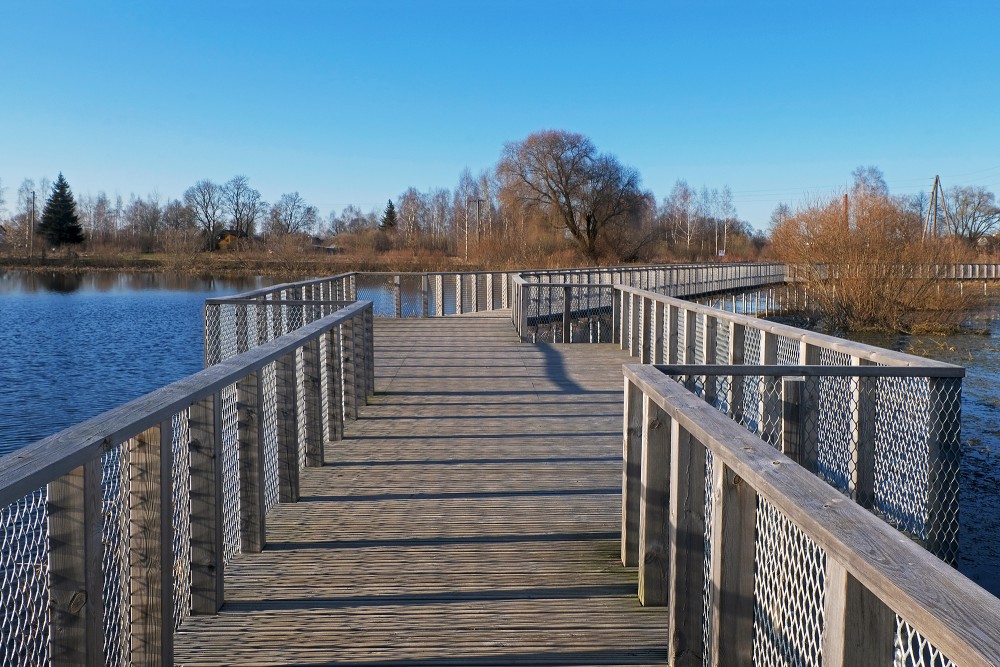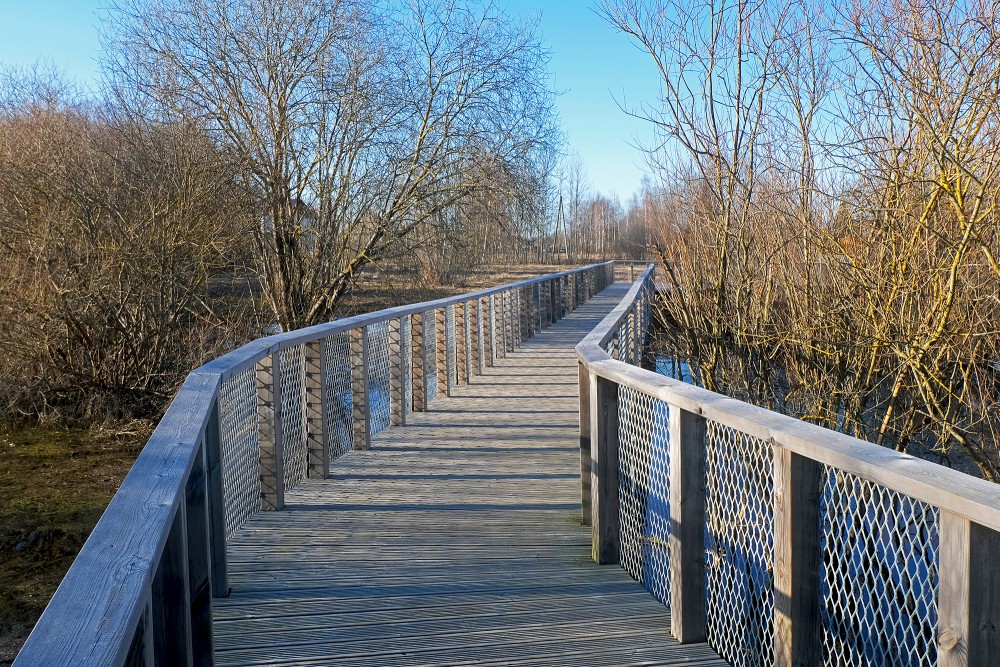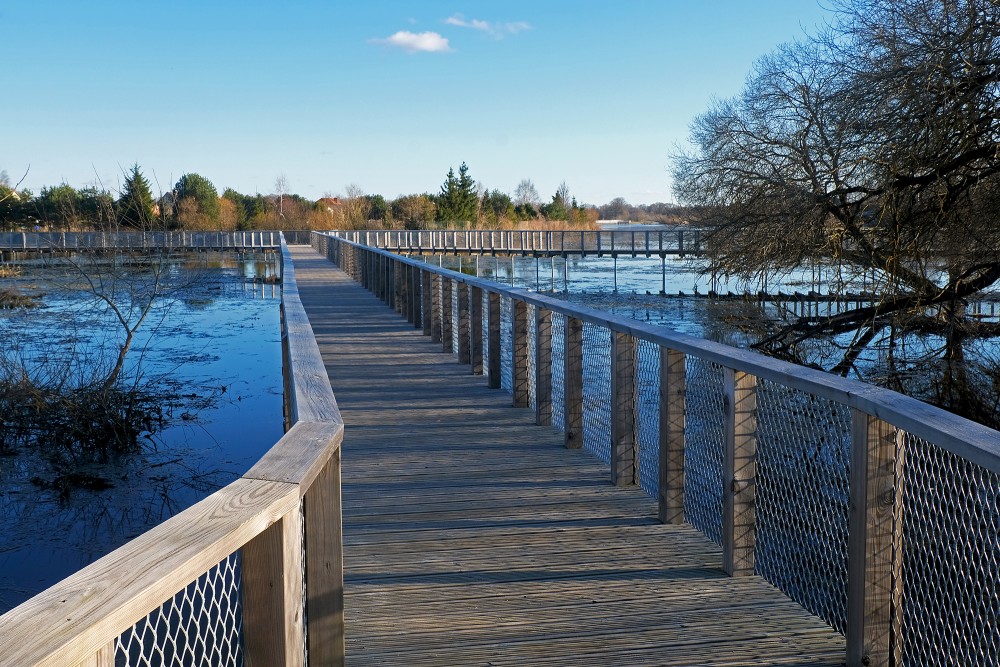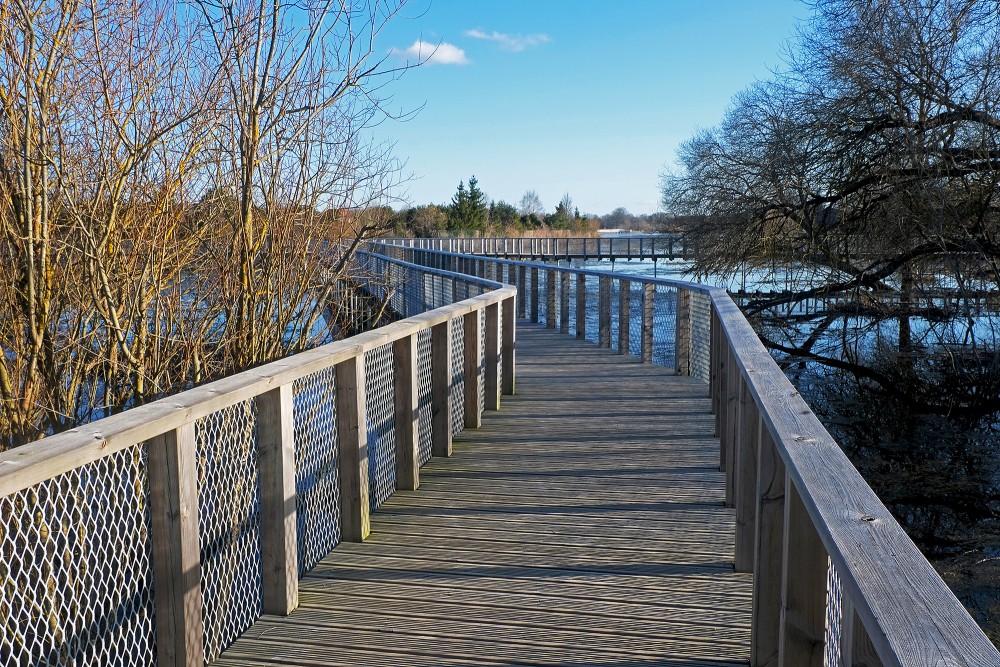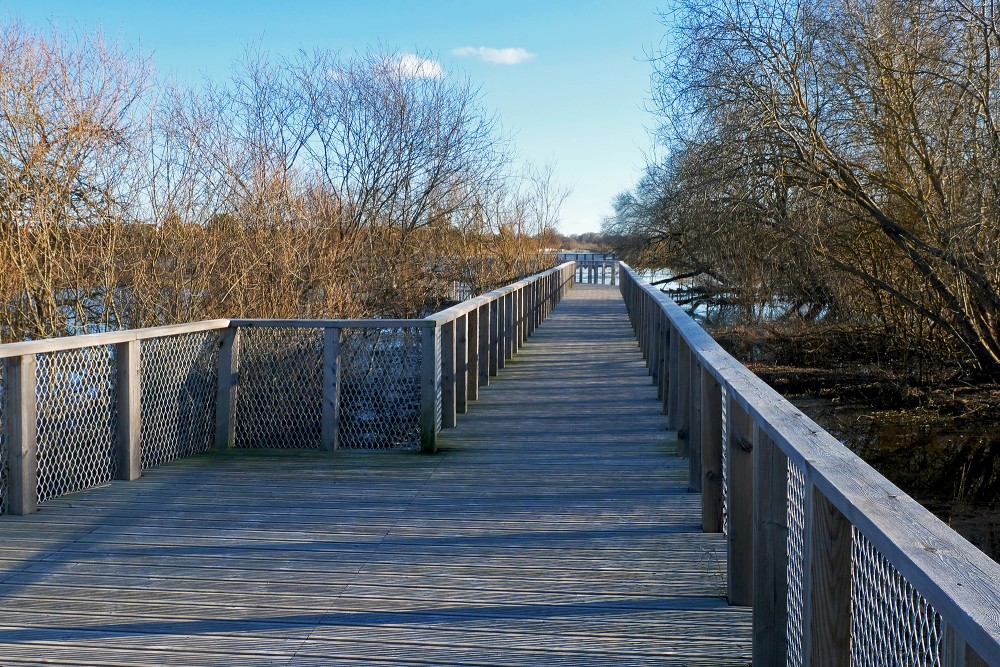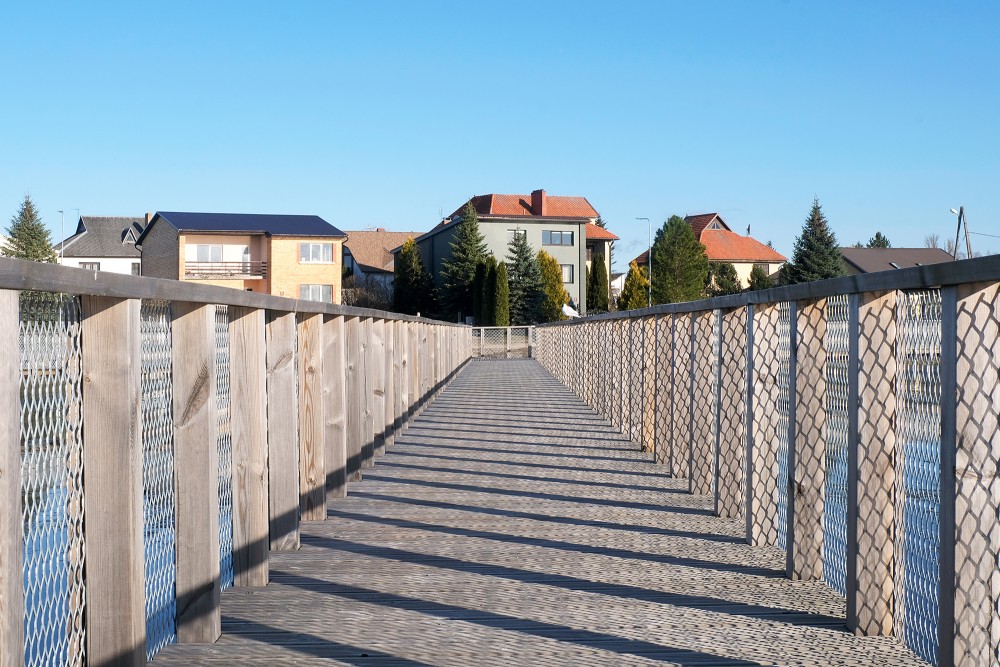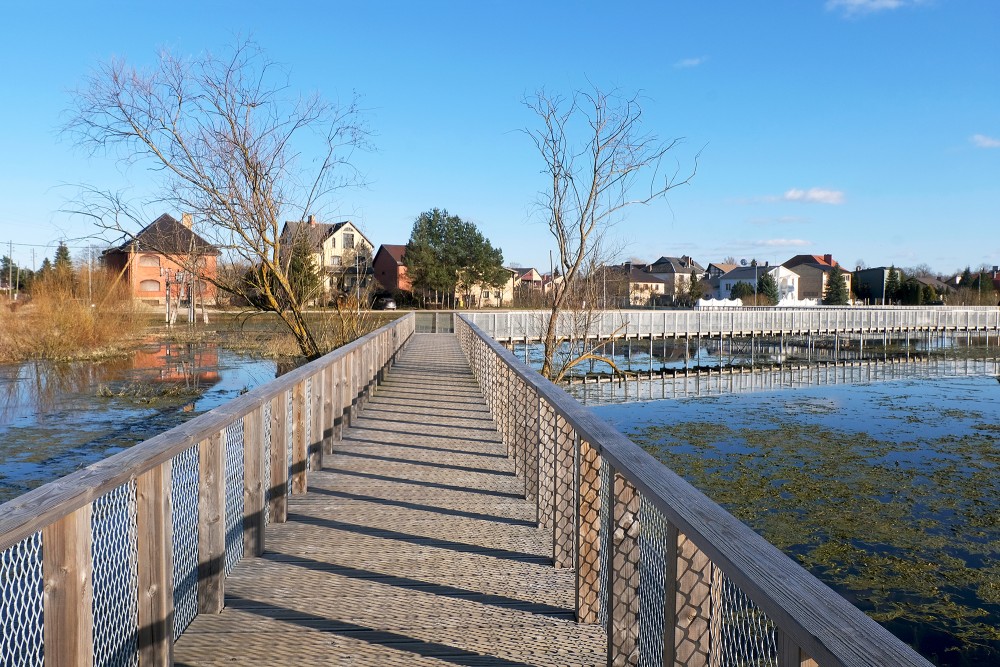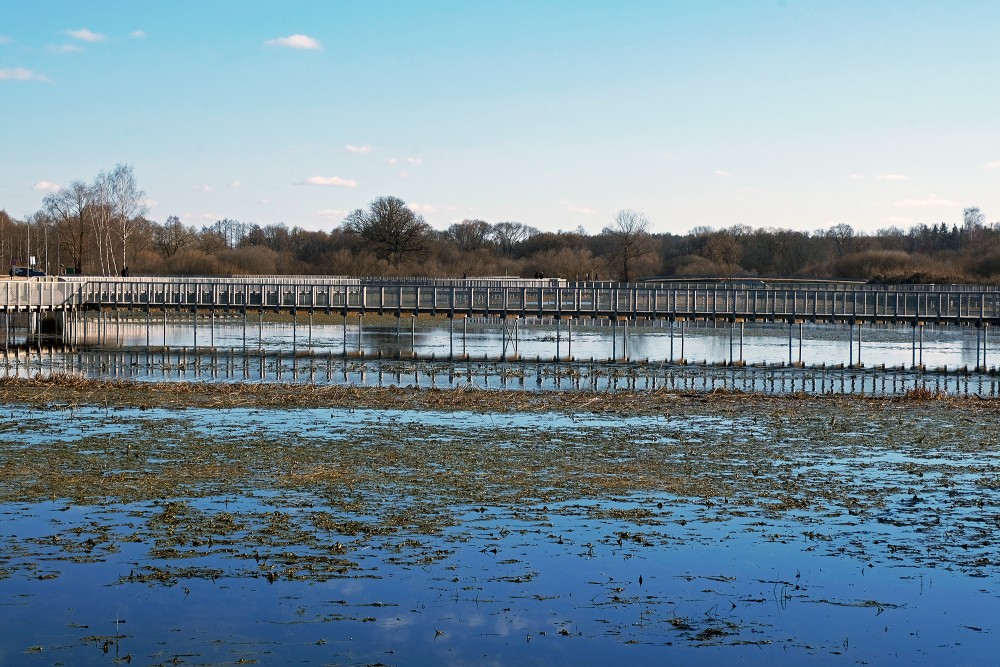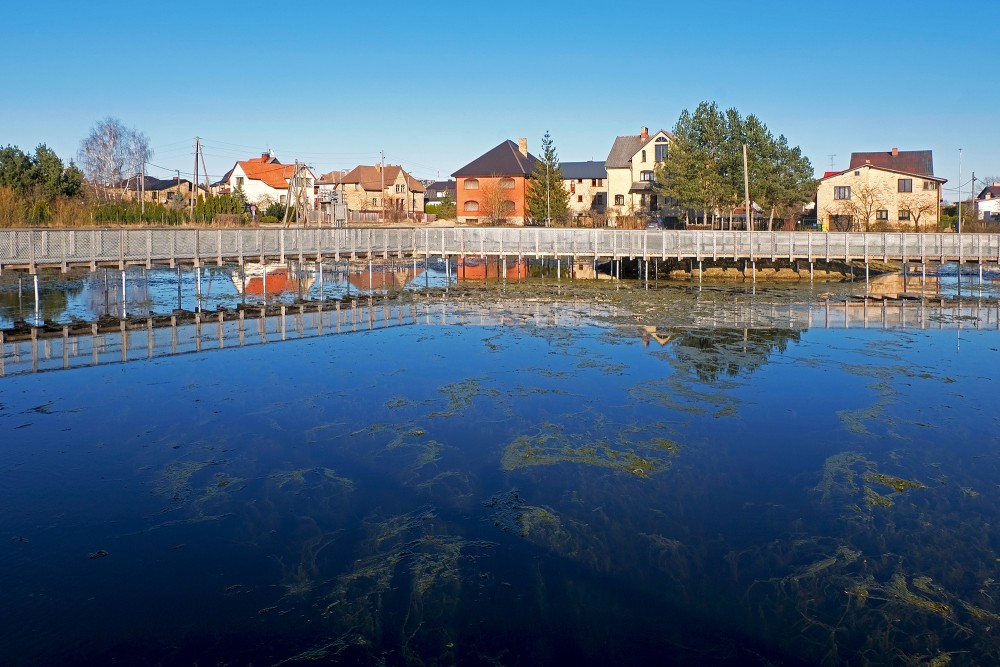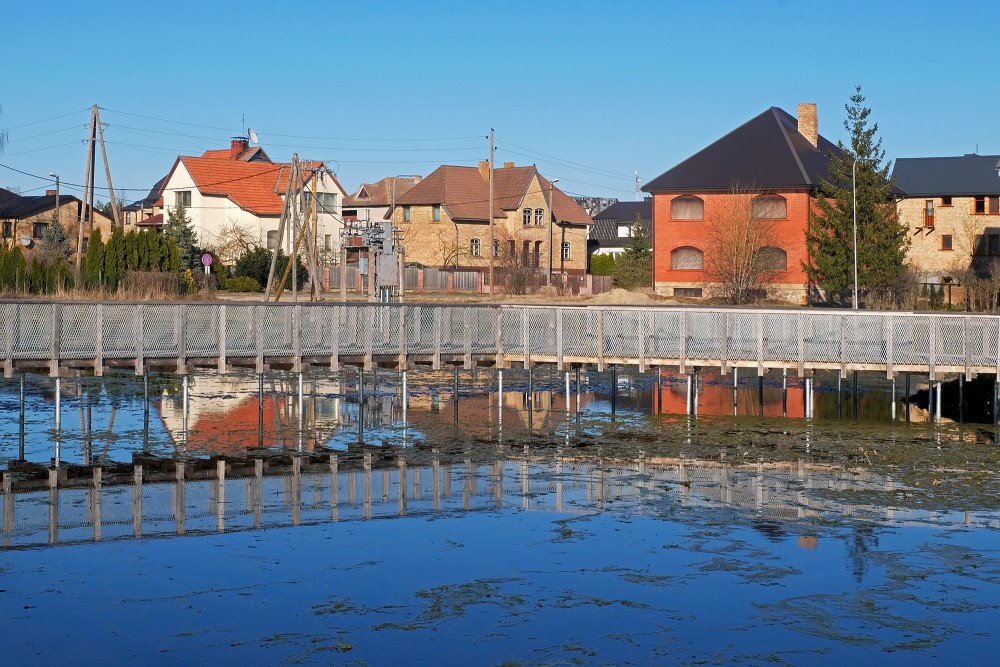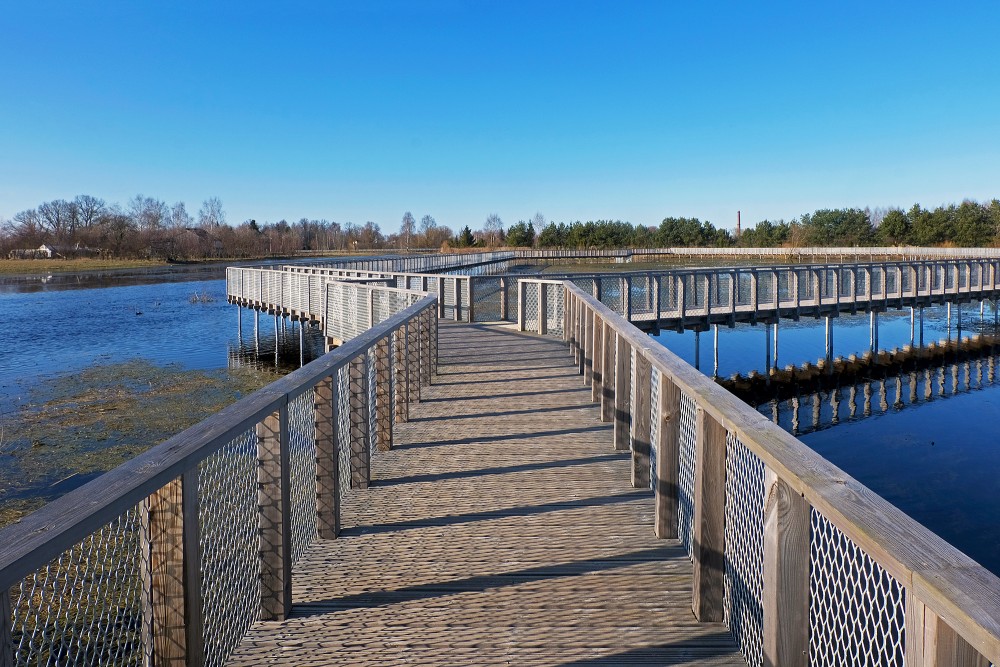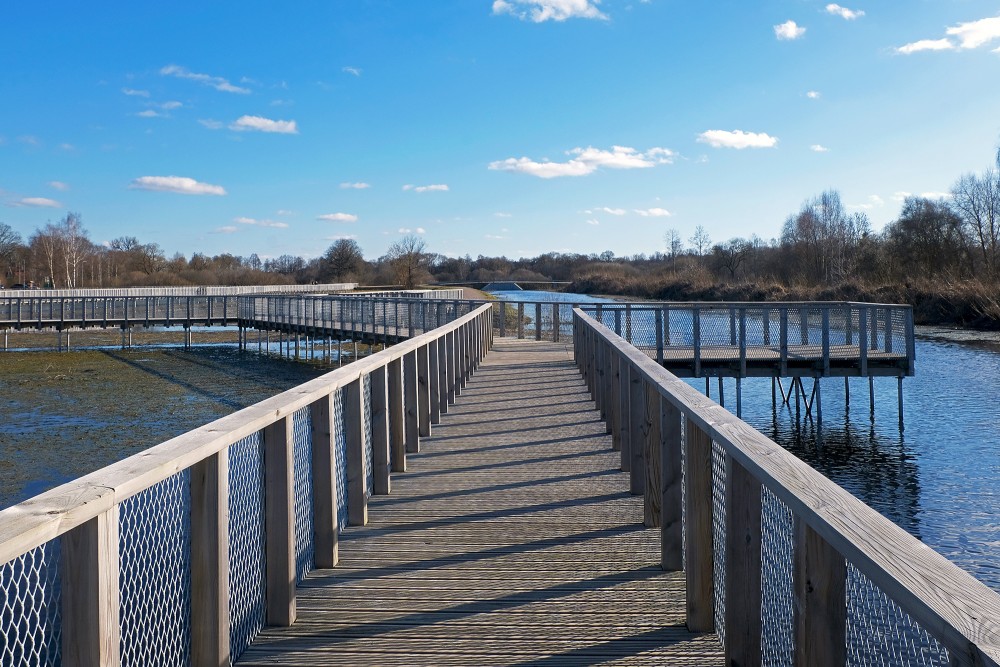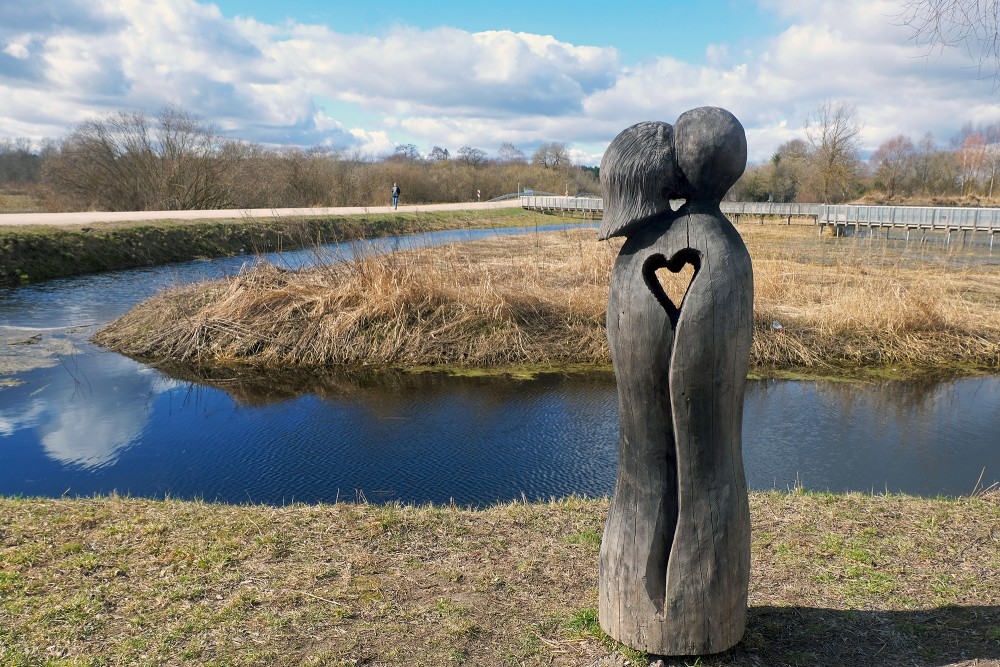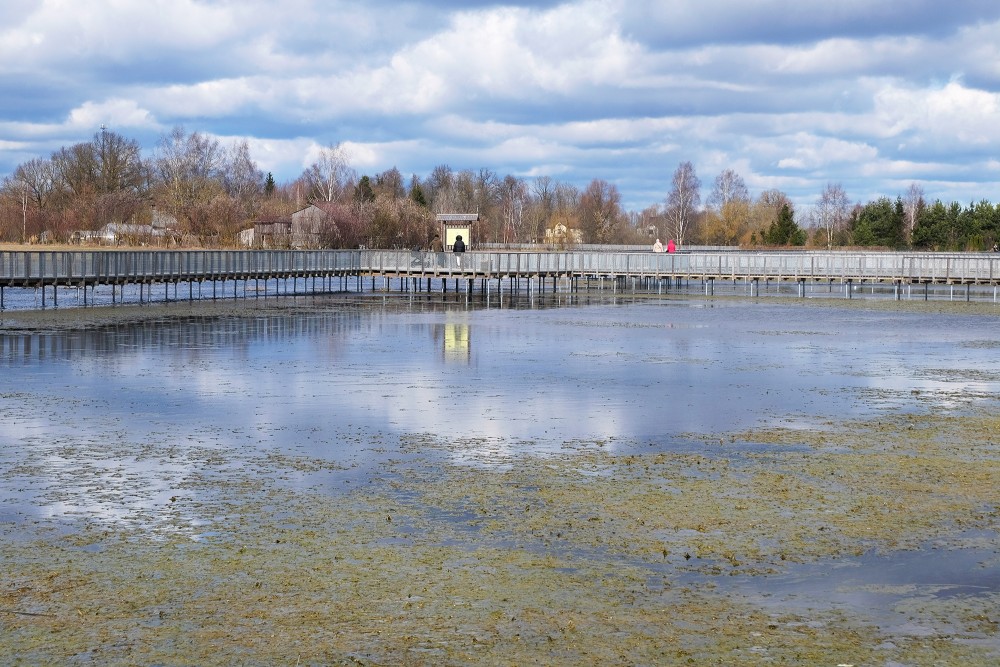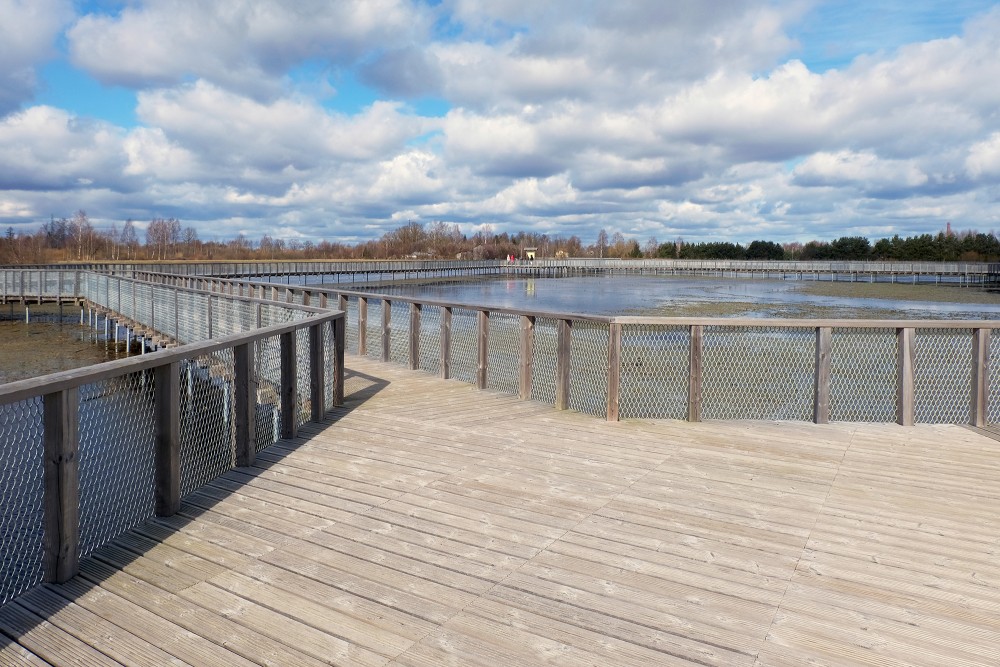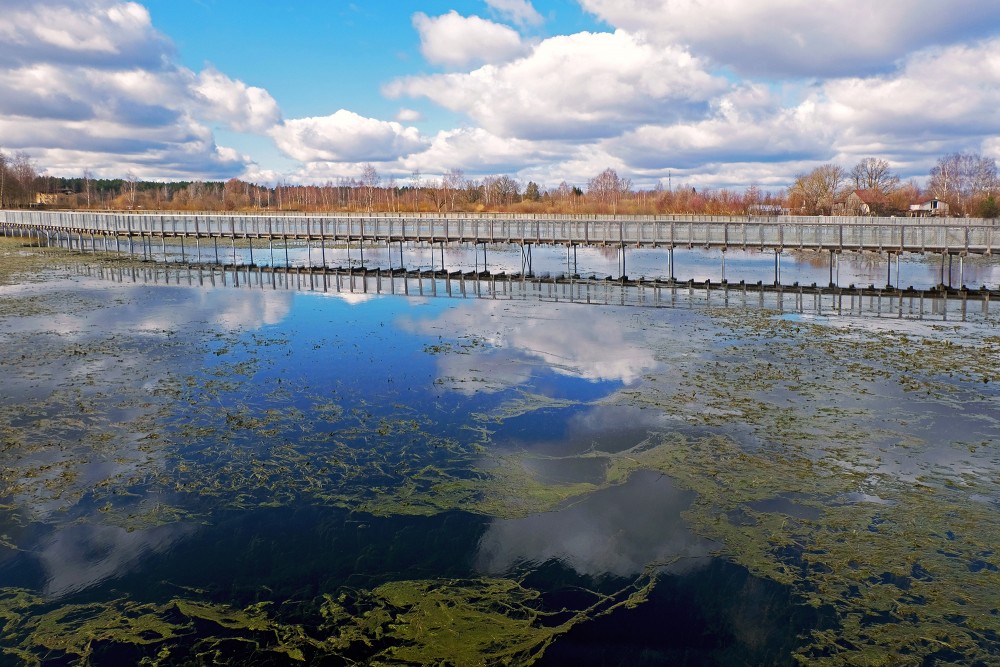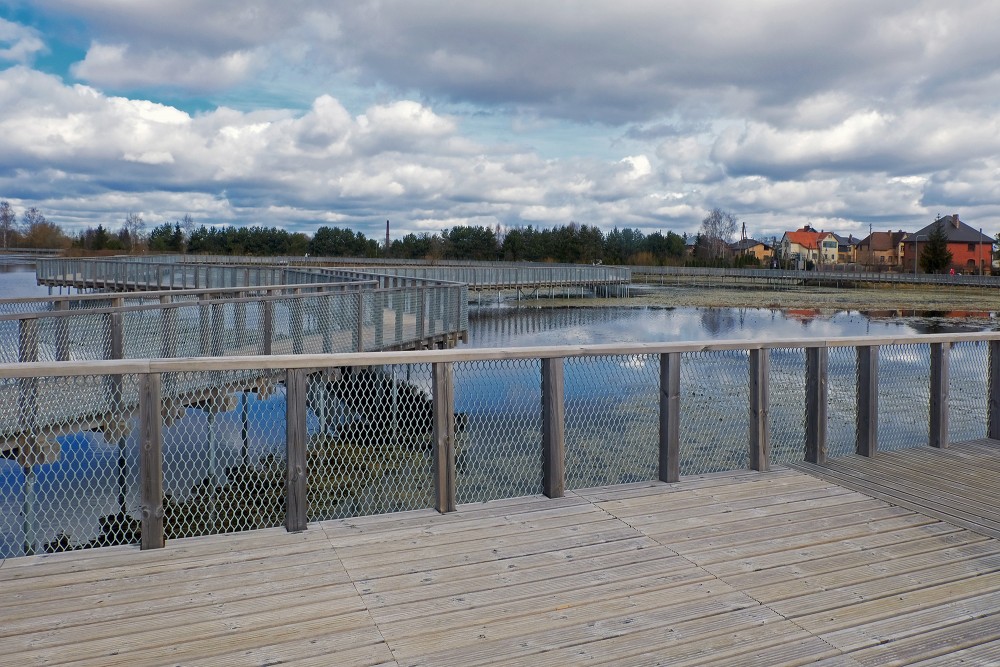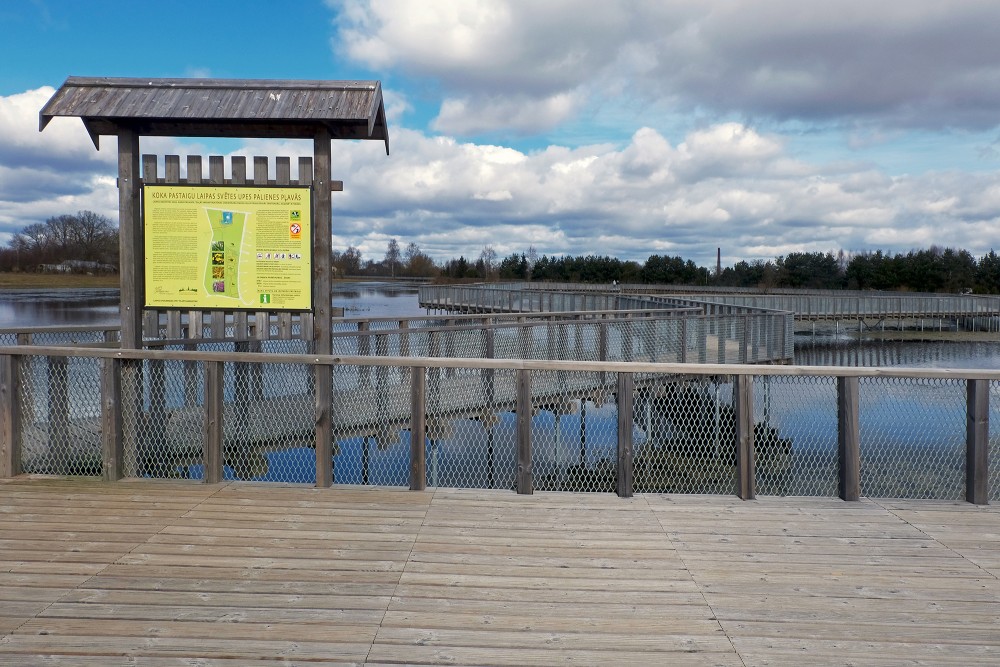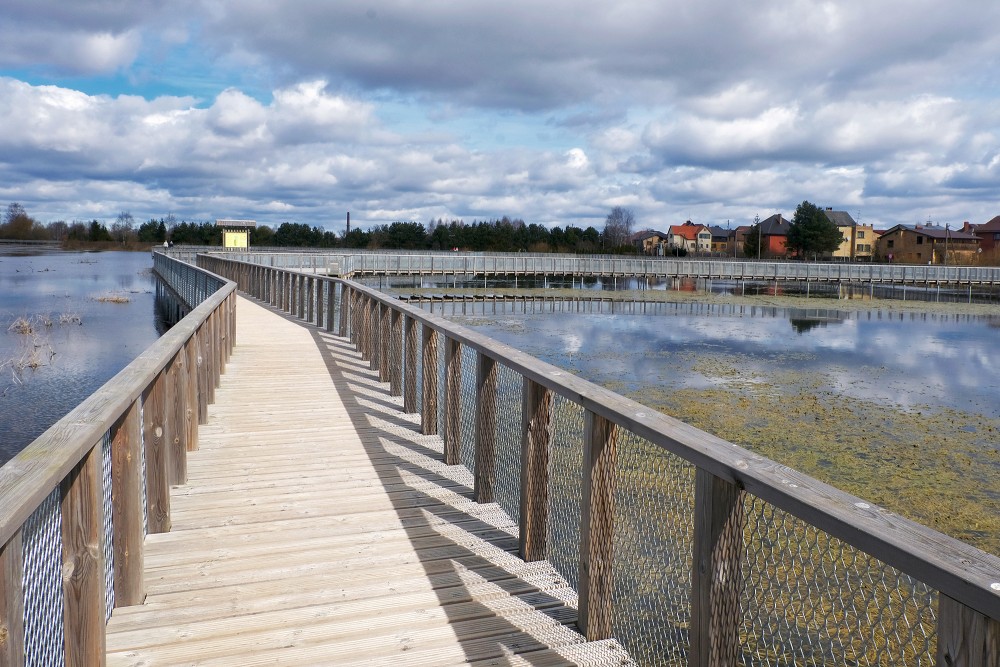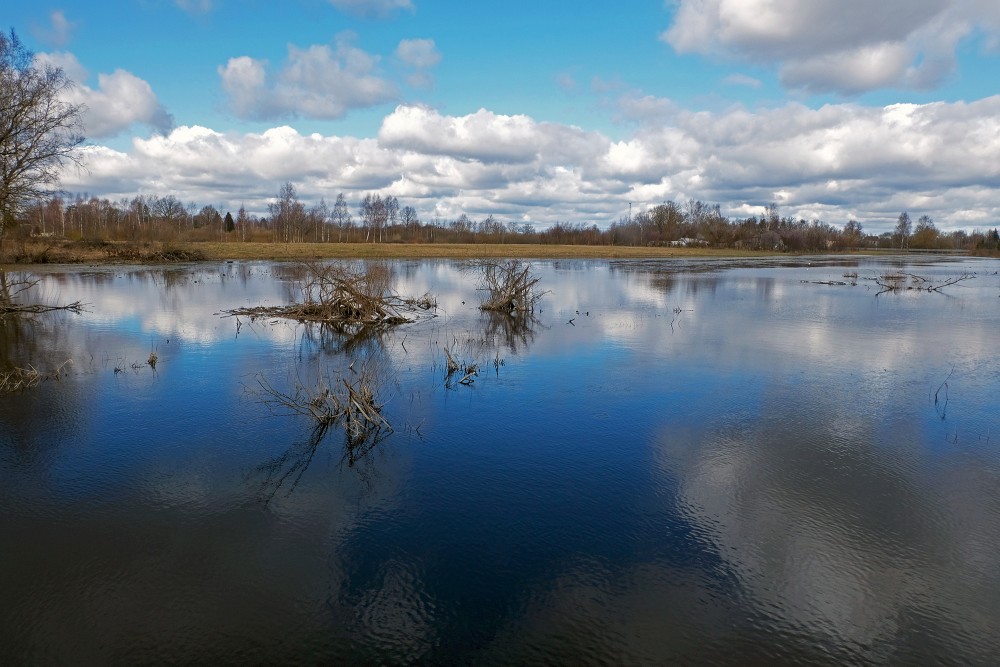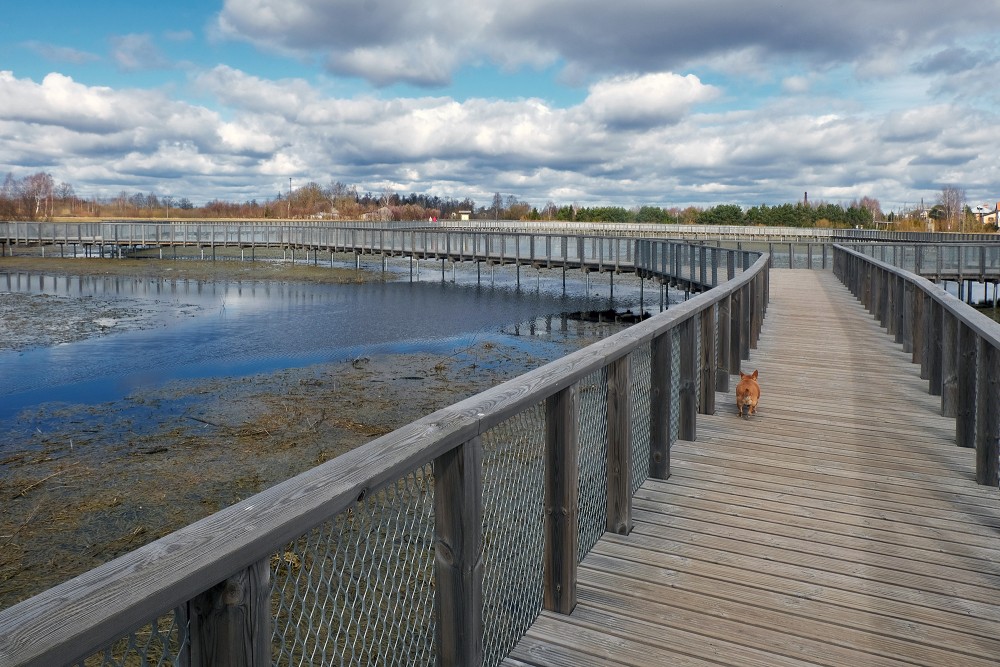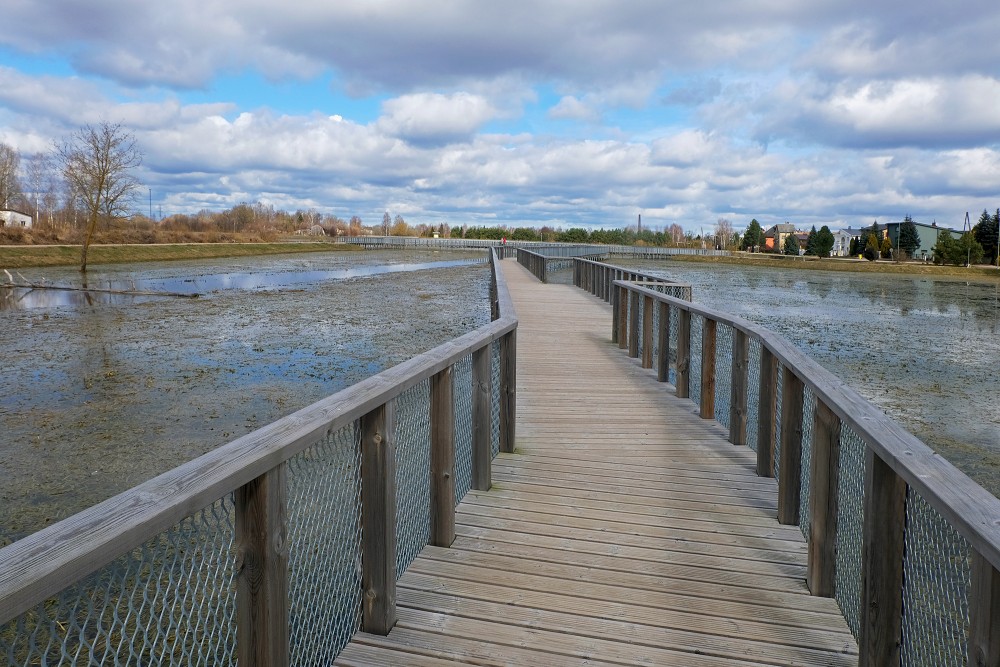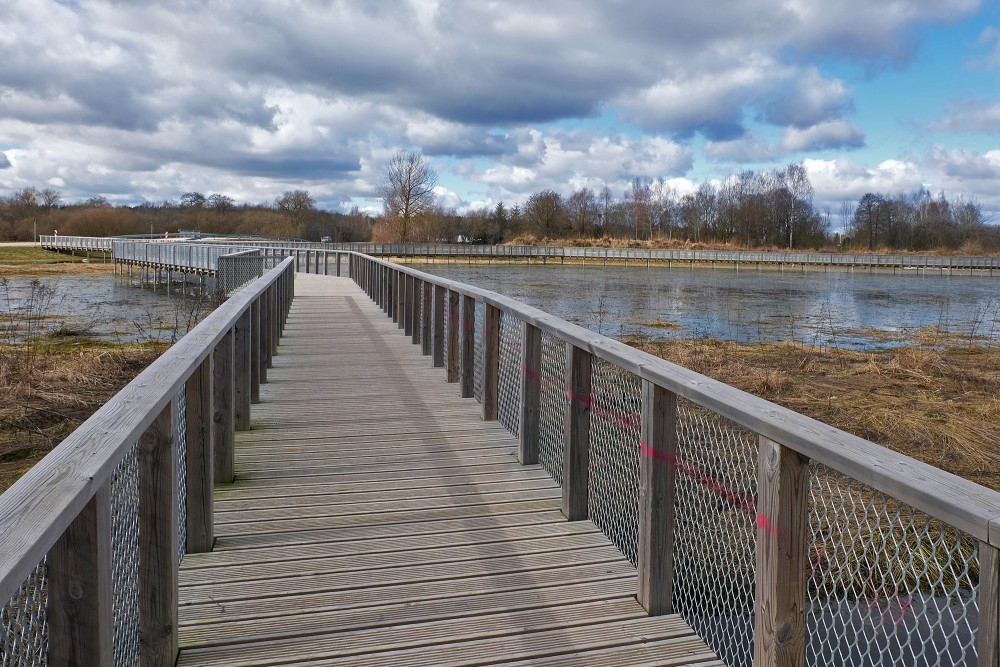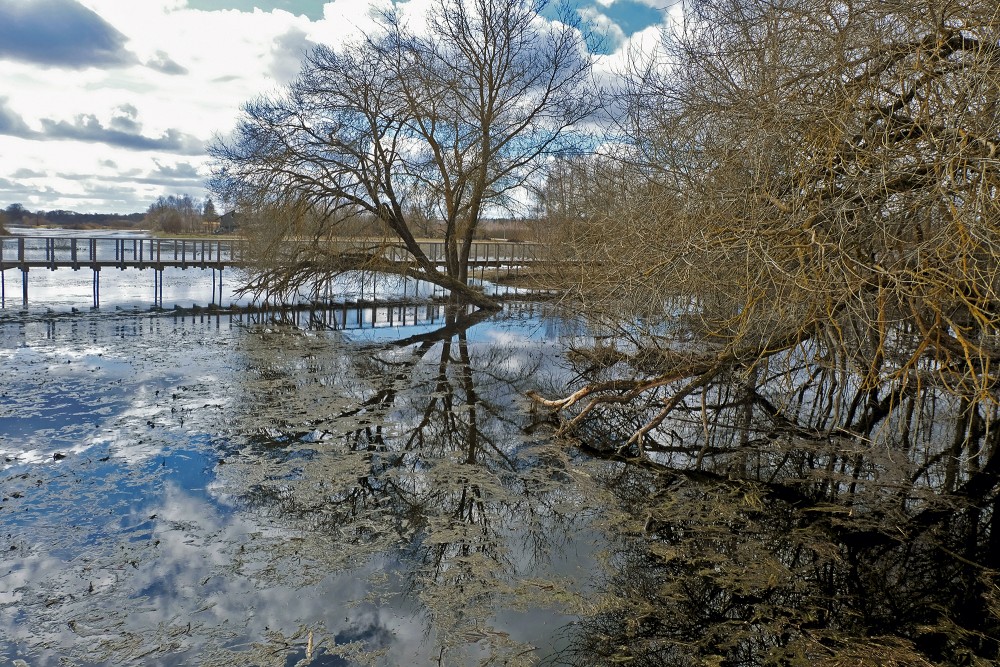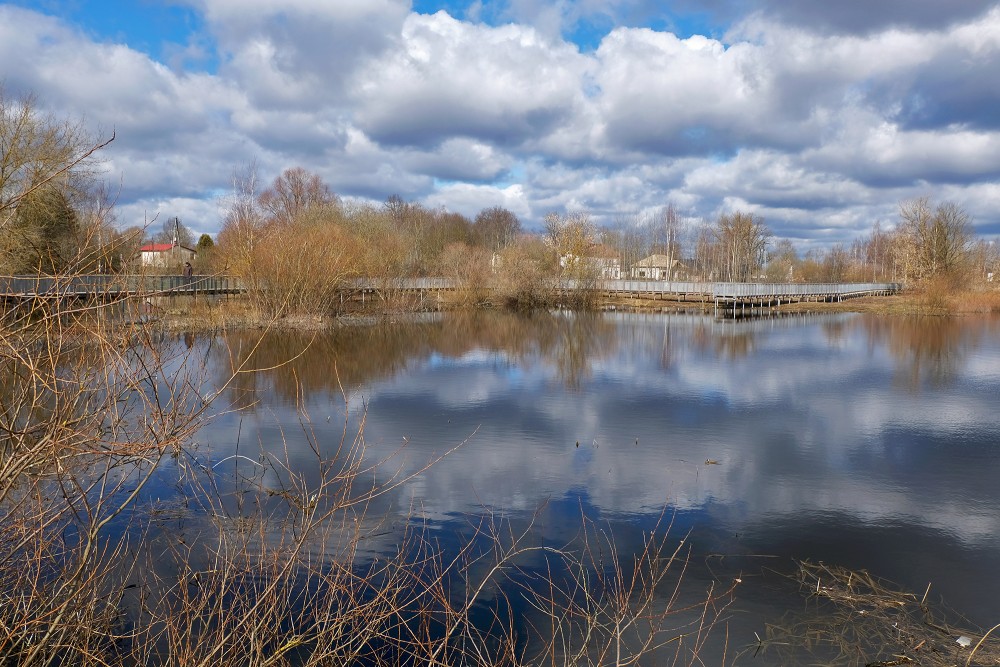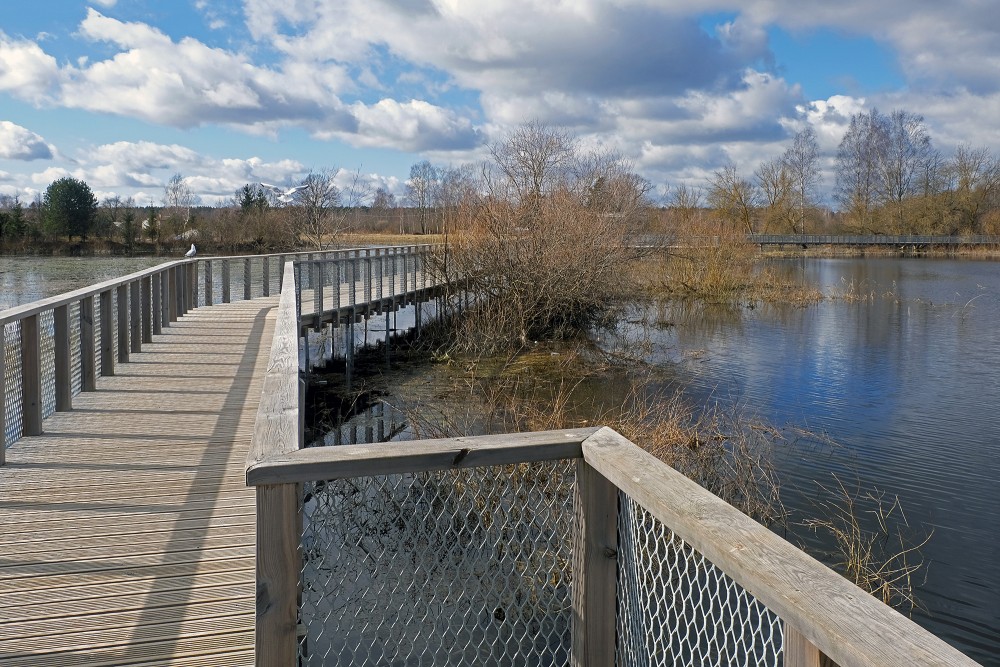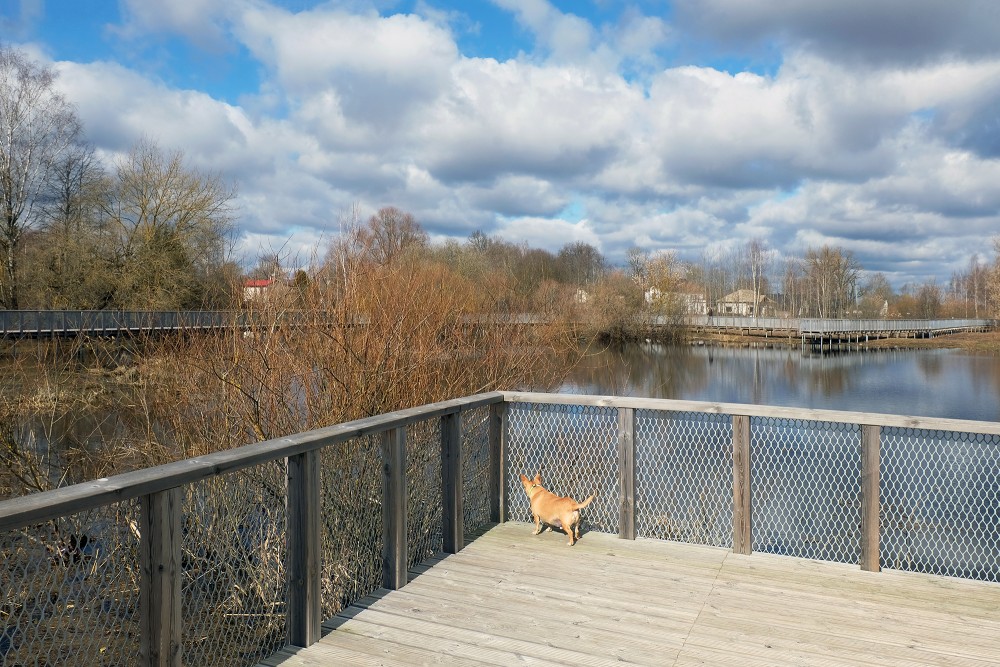Floodplain
A floodplain or flood plain is an area of land adjacent to a stream or river which stretches from the banks of its channel to the base of the enclosing valley walls, and which experiences flooding during periods of high discharge. The soils usually consist of levees, silts, and sands deposited during floods. Levees are the heaviest materials (usually pebble-size) and they are deposited first; silts and sands are finer materials.
Formation
Floodplains are formed when a meander erodes sideways as it travels downstream. When a river breaks its banks, it leaves behind layers of alluvium (silt). These gradually build up to create the floor of the plain. Floodplains generally contain unconsolidated sediments, often extending below the bed of the stream. These are accumulations of sand, gravel, loam, silt, and/or clay, and are often important aquifers, the water drawn from them being pre-filtered compared to the water in the river.
Geologically ancient floodplains are often represented in the landscape by fluvial terraces. These are old floodplains that remain relatively high above the present floodplain and indicate former courses of a stream.
Sections of the Missouri River floodplain taken by the United States Geological Survey show a great variety of material of varying coarseness, the stream bed having been scoured at one place and filled at another by currents and floods of varying swiftness, so that sometimes the deposits are of coarse gravel, sometimes of fine sand or of fine silt. It is probable that any section of such an alluvial plain would show deposits of a similar character.
The floodplain during its formation is marked by meandering or anastomotic streams, oxbow lakes and bayous, marshes or stagnant pools, and is occasionally completely covered with water. When the drainage system has ceased to act or is entirely diverted for any reason, the floodplain may become a level area of great fertility, similar in appearance to the floor of an old lake. The floodplain differs, however, because it is not altogether flat. It has a gentle slope downstream, and often, for a distance, from the side towards the center.
The floodplain is the natural place for a river to dissipate its energy. Meanders form over the floodplain to slow down the flow of water and when the channel is at capacity the water spills over the floodplain where it is temporarily stored. In terms of flood management the upper part of the floodplain (piedmont zone) is crucial as this is where the flood water control starts. Artificial canalisation of the river here will have a major impact on wider flooding. This is the basis of sustainable flood management.
Ecology
Floodplains can support particularly rich ecosystems, both in quantity and diversity. Tugay forests form an ecosystem associated with floodplains, especially in Central Asia. They are a category of riparian zones or systems. A floodplain can contain 100 or even 1,000 times as many species as a river. Wetting of the floodplain soil releases an immediate surge of nutrients: those left over from the last flood, and those that result from the rapid decomposition of organic matter that has accumulated since then. Microscopic organisms thrive and larger species enter a rapid breeding cycle. Opportunistic feeders (particularly birds) move in to take advantage. The production of nutrients peaks and falls away quickly; however the surge of new growth endures for some time. This makes floodplains particularly valuable for agriculture. River flow rates are undergoing change following suit with climate change. This change is a threat to the riparian zones and other floodplain forests. These forests have over time synced their seedling deposits after the spring peaks in flow to best take advantage of the nutrient rich soil generated by peak flow.
en.wikipedia.org
A flood-meadow (or floodmeadow) is an area of grassland or pasture beside a river, subject to seasonal flooding. Flood-meadows are distinct from water-meadows in that the latter are artificially created and maintained, with flooding controlled on a seasonal and even daily basis.
en.wikipedia.org
